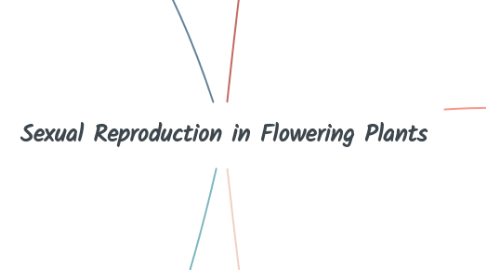
1. Gynoecium/Pistil/Carpel (female part)
1.1. Parts
1.1.1. Stigma
1.1.2. Style
1.1.3. Ovary
1.1.3.1. Ovules
1.1.3.1.1. Megasporogenesis (meiocyte- MMC (2n))
1.1.3.1.2. Anatropous ovule
1.2. No. of carpels
1.2.1. Monocarpellary
1.2.2. Multicarpellary
1.3. Nature of carpels
1.3.1. Apocarpous
1.3.2. Syncarpous
2. Androecium/stamen (male part)
2.1. Parts
2.1.1. Anther
2.1.1.1. Pollen sacs / microsporangia
2.1.1.1.1. Parts
2.1.1.1.2. Microsporogenesis (meiocyte- PMC (2n))
2.1.1.2. Pollen grains
2.1.1.2.1. Parts
2.1.1.2.2. Pollen Contamination
2.1.1.2.3. Pollen allergy
2.1.1.2.4. Pollen Viability
2.1.2. Filament
3. Pollination
3.1. Types
3.1.1. Autogamy
3.1.1.1. self pollination
3.1.2. Geitonogamy
3.1.2.1. Transition between Autogamy and Xenogamy
3.1.3. Xenogamy
3.1.3.1. cross pollination
3.1.3.1.1. Outbreeding Devices
3.2. Pollinating Agents
3.2.1. Abiotic Agents
3.2.1.1. Water (Hydrophily)
3.2.1.2. Wind (Anemophily)
3.2.2. Biotic Agents
3.2.2.1. Animals (zoophily)
3.2.2.1.1. Elephants (elephophily)
3.2.2.1.2. insect (entomophily)
3.2.2.1.3. bird (ornithophily)
4. Fertilization
4.1. Pollen-Pistil Interaction
4.2. Double Fertilization in Angiosperms
4.2.1. Syngamy
4.2.2. Triple Fusion
4.3. Stages of Embryo Development
4.3.1. Zygote
4.3.2. Proembryo
4.3.3. Globular Embryo
4.3.4. Heart shaped embryo
4.3.5. Matured Embryo
4.4. Endosperm
4.4.1. Types
4.4.1.1. Free nuclear
4.4.1.2. Helobial
4.4.1.3. Cellular
4.5. Embryo
4.5.1. Dicot
4.5.2. Monocot
5. Seed
5.1. Parts
5.1.1. seed coat
5.1.2. micropyle
5.1.3. embryonal axis
5.1.3.1. plumule
5.1.3.2. radicle
5.1.4. cotyledon, endosperm
5.1.5. hilum
5.2. types
5.2.1. endospermic seed
5.2.2. non endospermic seed
5.3. Seed Dormancy
5.4. factors affecting
5.4.1. moisture
5.4.2. temperature
5.4.3. light
5.4.4. oxygen
